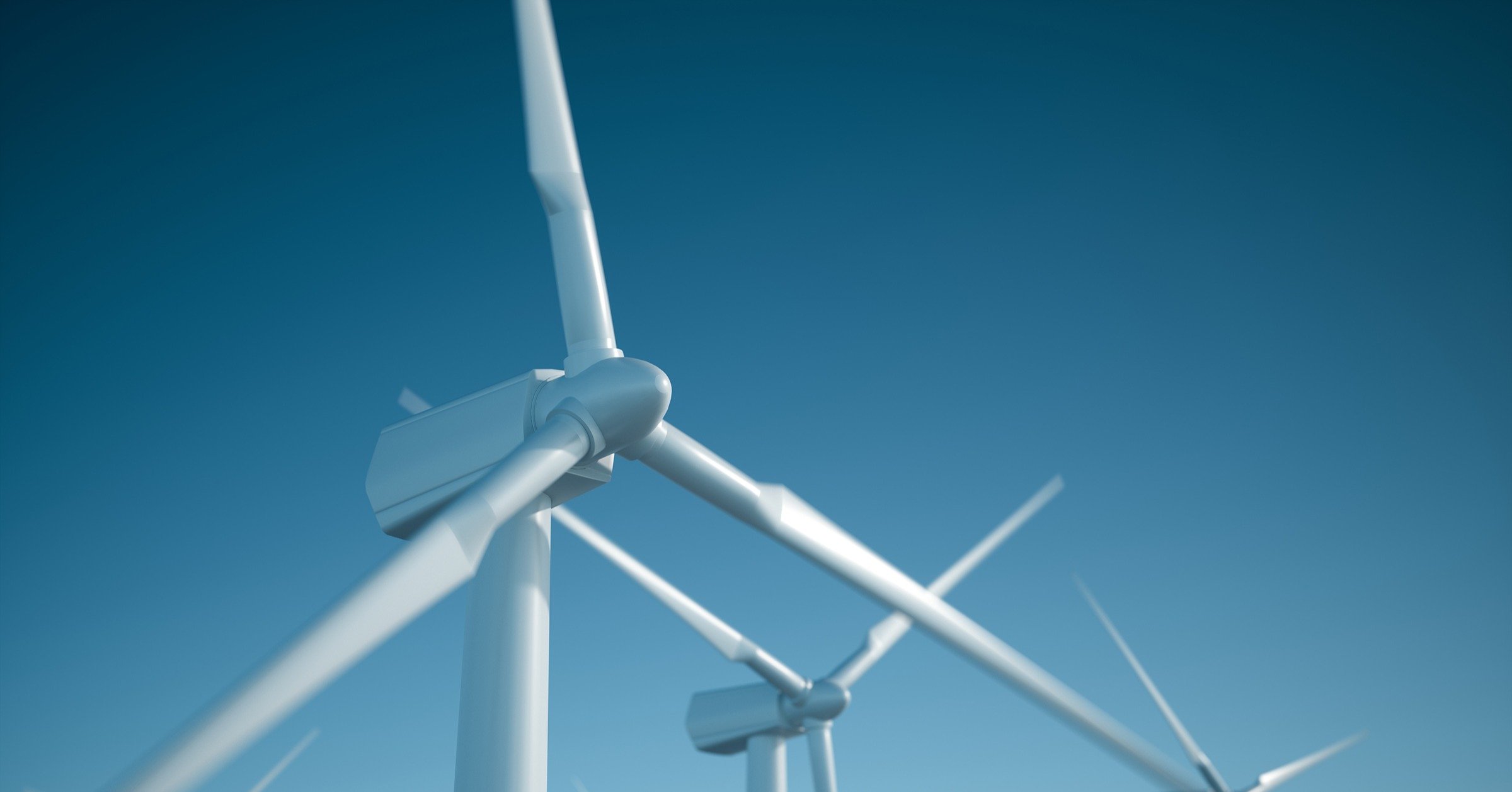The country’s energy mix has changed dramatically over the last decade. Several forms of renewable energy now account for approximately 17% of total U.S. electricity production and over 25% globally. These sources include wind, solar, geothermal and biogas/methane. High-density polyethylene pipe (HDPE) is well-suited for sustainable energy development and is ideal for many renewables-related pipeline applications.
United Poly Systems manufactures HDPE pipe for the following renewable energy applications:
- Wind farm electrical conduit
- Geothermal applications
- Biogas/methane capture and transmission
Wind Farms
As of January 2021, the U.S. Wind Turbine Database (USWTDB) contains more than 67,000 turbines. These turbines have all been constructed since 1980 in approximately 1,500 wind power projects spanning at least 44 states, Puerto Rico and Guam. On average, an additional 3,000 turbines are built and installed each year.
Wind farms can span thousands of acres. According to the U.S. Energy Information Administration (EIA), one of the world’s largest wind farms, the Horse Hollow Wind Energy Center in Texas, has 420 turbines spread over about 47,000 acres and has a combined generating capacity of about 735 MW.
Each turbine connects to a central substation or transformer where the output of the many turbines is combined into a main line which connects to the electrical grid. Because wind farms typically cover sizable areas, considerable amounts of large-diameter conduit are needed to protect the high-voltage lines transferring power from each turbine to the storage center. HDPE is an ideal conduit material one because of its strength, flexibility and lower cost compared to other alternatives.
Geothermal
According to ThinkGeoEnergy, the U.S. led the world as the top geothermal producer in 2020, based on installed power generation capacity, with more than 3,700 MW of capacity.
Geothermal energy can be created in different forms including:
- Dry steam from underground fractures to drive turbines
- Flash plants that pull high-pressure hot water from underground and mix with cooler water to create steam
- Binary plants in which hot water is passed through a secondary fluid with a lower boiling point. The secondary fluid is turned to vapor and drives a turbine.
Closer to the Earth’s surface, heat sources with temperatures of 30 to 150°C can be used as a heating source for residential, commercial, greenhouses, fisheries and industrial process heating. These heat sources do not need to be converted to electricity to provide power. Home heating is the fastest-growing means of exploiting geothermal energy and in many locations, the district heating method is more cost-effective than electricity generation. At natural hot springs or geysers, water can be piped directly into radiators for home heating. In hot, dry ground, earth tubes or downhole heat exchangers can collect the heat.
HDPE can be used for general geothermal applications like piping used to heat water circulated in underground geothermal systems and heating installations in residential and commercial buildings.
Biogas and Methane Capture and Transmission
Biogas is an energy-rich gas produced by anaerobic decomposition or thermochemical conversion of biomass. Biogas is composed mostly of methane, the same compound in natural gas and carbon dioxide. Biogas can be burned directly as a fuel or treated to remove CO2 and other gases and used in the same way as natural gas.
According to the U.S. Energy Information Administration, landfills for municipal solid waste are a source of biogas. In landfills, biogas is produced naturally by anaerobic bacteria and is also called landfill gas. The U.S. Clean Air Act requires municipal solid waste landfills of a certain size to collect and remove landfill gas. Many landfills collect and treat landfill gas to remove CO2, water vapor and hydrogen sulfide. The treated biogas is used for electricity generation or sold as a substitute for natural gas.
The EIA estimates that in 2019 about 257 billion cubic feet of landfill gas was collected at 336 U.S. landfills and burned to generate about 10.5 billion kilowatt-hours of electricity, representing about 0.3% of total U.S. utility-scale electricity generation in 2019.
HDPE pipe is an excellent use for the capture and transmission of methane produced on farms and bio-gas produced in landfills. It is durable, resists bacterial growth, and will not leak or break.
United Poly Systems Earth-Line™ Suite
United Poly System’s Earth-Line™ suite represents the company’s commitment to sustainable material and a sustainable future and is ideal for many renewables-related pipeline applications. Products in the Earth-Line suite include Thermal-Line for geothermal applications, Wind-Line for wind farm infrastructure and Bio-Line™ for methane capture and transmission.
About United Poly Systems
United Poly Systems produces quality HDPE pipe in diameters from ¾-in. to 26-in. IPS, 4-in. to 24-in. DIPS and ¾-in. to 2-in. CTS for use in many industries including telecommunications, power utility, water, electrical and oil and gas. The market for HDPE pipe continues to expand as initiatives to improve, repair and expand the country’s infrastructure are implemented.
Our off-the-shelf HDPE conduit/pipe is available in a variety of sizes, colors, dimensions and lengths, with or without stripes. We also offer fully customizable HDPE conduit options. In addition, piping can be customized with a ribbed interior (to maximize the distance cable may be pulled or jetted), pull tape, or a lubricated interior (for easier installation).
Success at UPS can be attributed to our vast experience, extensive client relationships, state-of-the-art manufacturing and quality processes. Our agile business model that allows UPS to quickly meet customers’ needs without the overhead expenses that are incurred by many of the larger producers in the industry.
Conveniently located in Springfield, Missouri and Albuquerque, New Mexico, United Poly Systems can provide quick delivery to a majority of the U.S. market.

